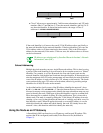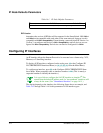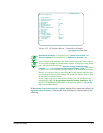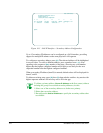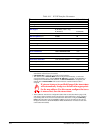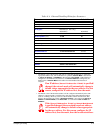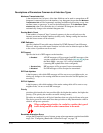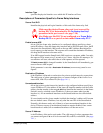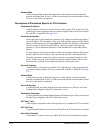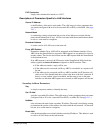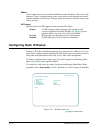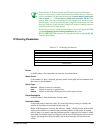
14-10 SmartSwitch 1800 4.0 User Guide, Rev 01
Descriptions of Parameters Common to all Interface Types
Maximum Transmission Unit
is the maximum size (in bytes) of the data field that can be used to encapsulate an IP
datagram for transmission over the interface. Any datagrams larger than the
Maximum
Transmission Unit
will be fragmented, resulting in additional processing on any inter-
mediate routers or gateways, as well as the destination host. If the
Maximum Trans-
mission Unit
value is less than the size of a minimal IP datagram, the value will
automatically change to the minimal datagram size.
Routing Metric Count
is the number of network "hops" (network gateways in the overall path over the
internet) associated with this interface (usually zero). During routing, the interface
with the lowest count will be selected.
ICMP Redirects
specifies whether IP may add routes obtained by ICMP (Internet Control Message
Protocol), whose error and control function is used to send re-direction options back
to the source if problems are discovered.
RIP Support
specifies the level of RIP support on the interface:
0Enabled
All RIP messages will be accepted, and RIP messages of the
version configured in IP Node Defaults (
[A], [A], [E], [A]
from
the Main Menu—see page 14-3) will be transmitted
(assuming RIP updates have been configured).
1 Receive Only
RIP messages will be accepted, but not transmitted.
2 Disabled
No RIP messages will be accepted or transmitted.
RIP Flash Updates
is the frequency with which RIP messages will be sent to every neighbor node, con-
taining any changes to the routing table that occurred since the last full update (see
next entry).
RIP Full Updates
is the frequency with which updates of the entire routing table will be sent to every
neighbor node, via one or more RIP messages.
Priority
prioritizes this interface for intra-nodal traffic; the higher the number, the higher the
priority. (This priority has no effect on traffic exiting a node.)
Priorities are configured on all logical interfaces that use a physical frame relay port.
The device processor in the node uses these priorities to help determine the order in
which it will process protocols.
When configuring priorities, be careful to consider the types of
traffic being routed on other connections in the node.
Bandwidth Allocation Group
assigns the IP interface to one of sixteen groups whose parameters regulate bandwidth
usage. See "Configuring Bandwidth Allocation Groups" on page 7-6.



